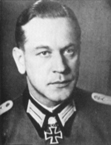wdolson
Posts: 10398
Joined: 6/28/2006
From: Near Portland, OR
Status: offline

|
quote:
Actual studies done in the last 20 years have found that, while rare, INTJ and INFJ are the two rarest types, but come in around 3% of the population
quote:
ORIGINAL: rtrapasso
Great - i've always been told i'm "weird" - now there is statistical proof...  
This touches on type dynamics, which is another layer to the theory, but INTJs and INFJs share the same dominant function, introverted intuition (Ni in shorthand). On the INFJ mailing list we have coined a term for those times we say something that seems perfectly normal and straightforward and people look at us like we just stepped off an alien mother ship. We call it the "mother ship look". Something probably every IN_J has experienced.
For those who are interested about type dynamics, this goes back to Jung's original theory and why J/P was added. Jung called I/E the Orientation, S/N the Perceiving Function, and F/T the Judging Function. He also said that in healthy (not mentally ill or severely unstable) people, one of the functions always is dominant (the go to function), and the other is always the auxiliary (or 2nd favorite). There is also an inferior, or least favorite, which is the complete opposite of the dominant. In each function pair, one is extraverted and the other is always introverted.
With extraverts, the world sees their dominant function because that is what is extraverted. With introverts, the world sees the auxiliary because the dominant is introverted and doesn't come out except in rare situations. As mentioned above, a suffix is given to the function letter to show the orientation of the function. ie Te is extraverted Thinking, Si is introverted Sensing, etc.
The E/I orientation is where you naturally go to as a default, either out in the world, which is often social, but can also be activity oriented; or inwardly directed. A study done in the 1990s showed that there were actual brain differences between Extraverts and Introverts. For a given stimulation (in this case lemon juice on the tongue), introverts tended to show more brain activity than extraverts did. The study had recently been reproduced with the same results. The conclusion of the studies were that introverts can get all the brain stimulation they need just sitting there and can get overwhelmed with too much input. Extraverts get less stimulation per event and will go out seeking out more.
S/N is how you collect information, ie Perceive the world. When this function is operating, you are gathering data.
T/F is how you make decisions, ie make Judgements. When this function is operating, you are paring down the pile of data and reaching a conclusion.
Myers and Briggs added J and P to point to which of the middle two letters was extraverted. The descriptions of Perceiving are what S and N have in common when operating in the external world. Similarly, the description of Judging is what F and T have in common when operating in the external world. The other function is always introverted.
I/E tells you which function is dominant. For introverts the dominant is always the introverted one and the opposite is true for extraverts.
This chart shows how this breaks down for each type: Table There is some debate about the orientation of the tertiary, which is why it doesn’t have an orientation in the table.
The four _N_J types all have Ni in the dominant or auxiliary. Introverted intuition is the most abstract and conceptual of the function orientations. This game seems to have a lot of appeal to Ni types from the people who have reported in this thread. I know this game has drawn me in much more than anything else I have ever played.
Obviously other types are just as addicted, absolutely nothing in social science ever has sharp lines. Other types are getting a lot of enjoyment out of this game too. All you can ever talk about is trends in the data.
The fact that this game has drawn such a large share of Ni types is interesting though. Matrix could probably increase market share by targeting other groups that are heavily Ni. For example, Mensa is close to 25% INTJ.
Bill
_____________________________
WitP AE - Test team lead, programmer  |
 Printable Version
Printable Version

























 New Messages
New Messages No New Messages
No New Messages Hot Topic w/ New Messages
Hot Topic w/ New Messages Hot Topic w/o New Messages
Hot Topic w/o New Messages Locked w/ New Messages
Locked w/ New Messages Locked w/o New Messages
Locked w/o New Messages Post New Thread
Post New Thread